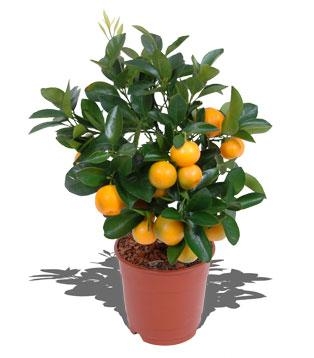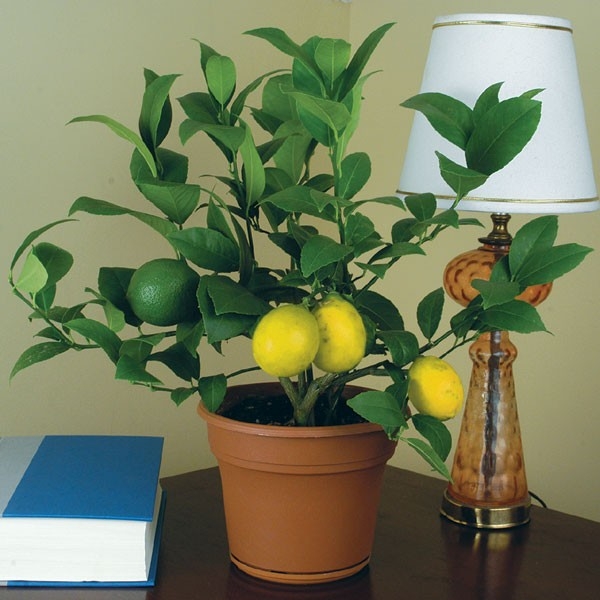Advice for the Home Gardener from the Help Desk of the Master Gardeners of Contra Costa County
Client;s Request: Hi! Do you know of any small citrus trees that would do well living inside? Thanks!
MGCC's Help Desk Response: Thank you for your inquiry to the Contra Costa Master Gardeners regarding citrus suitable to be grown indoors. 
pix: citrusplants.info
Root stock will determine the overall size of the tree. Because you may need to move the potted plant, select a dwarf citrus, which is often grown on Flying Dragon Trifoliate Orange root stock – a natural dwarf that grows to about 10'-12'. It has a limited root system and must be watered carefully (will not withstand missed waterings or drought). If needed, you can prune the tree to a manageable height and width. Plant in a well-drained potting soil mix in a pot that is at least twice the size of the root ball. You will probably need to re-pot the citrus again later as the tree matures.
The MGCC publication, Citrus for the Home Garden may also be useful to you //ucanr.edu/blogs/slomggarden/blogfiles/4260.pdf
Citrus varieties commonly available as dwarfs are lemons, limes, kumquats and clementines. The UC ANR publication Tried and True or Something New has a list of common and new citrus varieties for you to consider -http://anrcatalog.ucanr.edu/pdf/8472.pdf
pix: Logees
California does have some large citrus specialty nurseries, several of which are located in Northern California. They do offer citrus that can be grown indoors (“house plants”). While some do supply mail-order access, it has been my experience that many of the citruses you might be interested in from these nurseries are also available in retail nurseries and even in some of the big box stores at times. One of the larger wholesale/retail growers also has several pages on the web on growing citrus as “houseplants” that should be of interest to you (e.g., https://www.fourwindsgrowers.com/tips-and-advice/growing-dwarf-citrus/as-houseplants.html). I'm sure other citrus specialty nurseries can supply similar information on their trees, especially dwarf trees.
Good luck with your indoor citrus selection! Please do no hesitate to contact us again if you have more questions.
Help Desk of the Master Gardeners of Contra Costa County (VLT)
Note: The UC Master Gardeners of Contra Costa's Help Desk is available year-round to answer your gardening questions. Except for a few holidays, we're open every week, Monday through Thursday for walk-ins from 9:00 am to Noon at 75 Santa Barbara Road, 2d Floor, Pleasant Hill, CA 94523. We can also be reached via telephone: (925) 646-6586, email: ccmg@ucanr.edu, or on the web at http://ccmg.ucanr.edu/Ask_Us/ MGCC Blogs can be found at http://ccmg.ucanr.edu/HortCoCo/ You can also subscribe to the Blog.